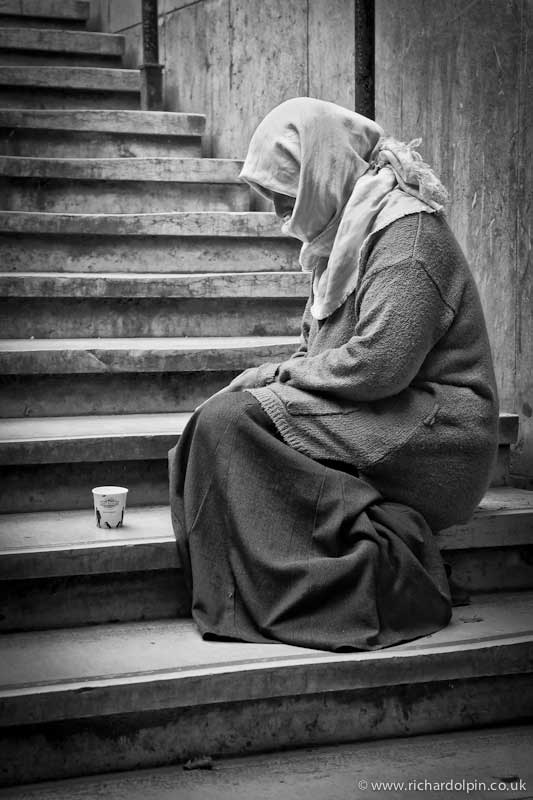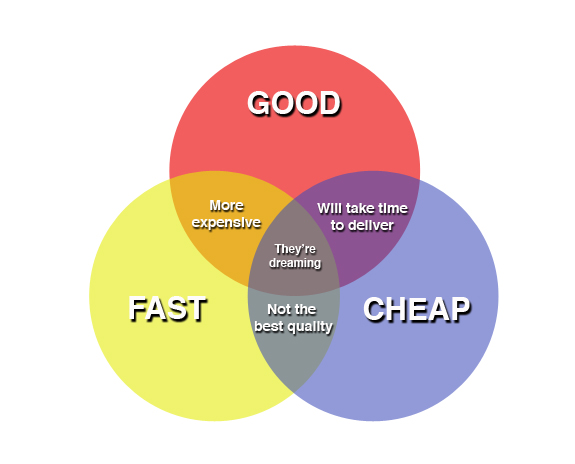Tefnut Spirals
/in Images, Photo Shoots, PhotographyThe delightful Tefnut Spirals, shot in her crypt one sunday afternoon..
I’d only popped over to do a few quick snaps of her in a t-shirt to promote her boyfriend’s band. Funny how things work out, eh?
Copyright in Photography
/in Articles, Photography(Article original published on PurplePort. Reproduced with permission from Andy Lewis Photography)
In this article I will try to cover the basics of copyright and common misconceptions. This is not meant to be the definitive answer to all situations. Copyright law in some cases can be a very complex. If you feel any part of this article is factually incorrect the please contact me directly.
What is Copyright?
Copyright is a legal concept which exists to allow the original creator of a piece of work to be allowed exclusive rights to the piece of work. This piece of work can be a Photograph, a motion picture, a piece of music, a poem, choreography, sound recordings, computer software, graphic design and so on. For the purpose of this article I will be referring to copyrights relating to photography.
When does copyright exist?
Copyright exists as soon as the photograph is taken regardless of it being on film or digitally.
Who owns the copyright?
Copyright is held by right by the photographer who creates the image. In the case where the photographer is an employee then the copyright goes to the employer unless some other agreement is in place. In photography the copyright is held by the photographer who takes the image. Any parties involved in creating the shot, set designers, clothing designers, make up artists etc. and any models who appear in the photograph have no rights whatsoever to the copyright.
How long does copyright last?
Copyright in a photograph usually lasts 70 years from the end of the year in which the photographer dies. This is not automatic as the copyright holder may have left the copyright in his/her will.
Can the copyright be transferred?
The copyright or part of it can be transferred or reassigned to another party freely or for compensation.
For example a photographer taking an image but does not have the ability to mass produce the image, and the means to market and sell the image, may transfer copyright of the image to a company that specialises in that area. The photographer negotiates their own compensation, i.e. a one off payment. Copyright is then transferred with the photographer having no further rights to the image.
In the same situation the photographer may not wish to transfer the copyright but may wish to assign license instead. This gives the company rights to mass produce and sell the image in the same manner. In this situation the company are probably going to negotiate a better deal for themselves. They may not give an upfront payment, they may offer a lower percentage per sale or they may simply refuse the offer as being the copyright owner you are able grant other companies use of the image thus lessening its value to them. It is up to the photographer and the company to decide the terms and conditions of the deal.
The photographer could retain copyright and grant exclusive license to the company, allowing them to mass produce and sell the image in the knowledge that they have exclusive rights to do so. The photographer would usually in this case negotiate a payment for each image sold. The photographer would retain the copyright but would not be able to make the image available to anyone else.
The copyright owner may also state that any works is royalty free granting anyone free use of the image
Copyright infringement
There are many ways in which you can infringe upon copyright some of which are more obvious than others. If you see an image posted on any part of the world wide web you must assume that it is copyrighted unless it is specifically marked as not copyrighted or royalty free. Examples of copyright infringement include but not exclusive to
- Altering the image or part of the image in any way
- Passing the image off as your own work
- Printing a copyrighted image and selling it on
- Cropping the image
- Pasting the image into part of a larger image
- Taking a photograph of a photograph to recreate it.
Common copyright infringements
This list is not exhaustive and is only representational of the usual infringements found on a website such as this.
- Taking an image from a photographers portfolio and using it on your own portfolio or other website without their consent.
- Editing an image given to you by a photographer.
- Cropping any image given to you by a photographer.
- Removing or attempting to remove or cover a watermark on any image.
- Allowing an image you have been given to be used for commercial gain.
- Selling or permitting use for publication any image given to you by a photographer without their consent.
Common misconceptions
My tutor said he/she owns the copyright to an image I took while under instruction is this true?
Unless it clearly states this in the terms and conditions of the training course then the answer is no. The tutor may set the shot up, arrange the lighting, meter the shot, tell you what camera settings to use and so on but if you press the shutter, you own the copyright.
I worked on a tf with the photographer so I have equal rights to the image
Wrong. The photographer owns the full copyright to the image. He/she may grant you permission to use the image for your portfolio or in any other way agreed. You may not sell or allow the image to be used for any other purpose without the express consent of the photographer.
The photographer tagged me in the image so I copied it from his portfolio
Wrong, unless the photographer granted you usage rights to the image you may not use the image on your portfolio or anywhere else. In the case of a TF shoot you will have or should have been given usage rights to a specified number of images from that shoot, if you subsequently see another image from that shoot it does not give you any rights to use it without permission.
The photographer did not deliver the images from our tf shoot so I took them from his/her portfolio
No you have no rights to take them from the photographers portfolio. This scenario should never really happen but in the unfortunate event it did you did not receive the images you must contact the photographer for the images. If the agreed number of images do not get sent to you, please report this to admin.
I did not like the shots the photographer gave me so I had them re-edited
Any editing, cropping or altering of an image may only be done with permission of the photographer. Altering any images given to you without permission is not only bad manners and likely to cause upset, it is also in breach of copyright.
What should I do if I see my image being used wrongly?
If you find your image being used in breach of your copy right you can choose to ignore it and leave it be or you can choose to persue it. If you choose to persue it you should take a screen shot of the website hosting the image and a note of the website address itself. In the event of it being in a newspaper or other publication, keep a copy of it. You should then contact the person who you feel has breached the copyright. In the event of a website you can usually contact them in their contact section or find the registered owner of the domain name from http://whois.net/. You can either send them an invoice for the usage of the image and or request they remove it. To get a guide to how much your invoice should be for you can find some information on http://www.nuj.org.uk/home/
Oops, rookie mistake!
/in Images, PhotographyI had a quick trip out yesterday to take a few snaps with my friend Phil. I’d suggested a quick trip down to the Severn bridge as there’s generally something pleasing to be had there. I’ve been a bit under the weather for a few days and I clearly wasn’t firing on all cylinders as when I got home I realised that horror of horrors, I’d been shooting with me camera on medium size, highly compressed jpegs.. Oops, how embarassing, especially as I’m always preaching the benefit of shooting in RAW mode.. It just so happened that last week I’d shot a weekend event where I was only taking snaps that I didn’t expect to ecit, so of course I was happy shooting in jpeg. First time ever..
Still, it seems I just about got away with it – click the header image above and let me know if you agree :-)
Mono Conversions
/in Articles, Images, Photography, Tips & TechniquesThe example below show how much more effective a simple image can be with a monochrome conversion.
Hopefully by the wonders of modern science you should be able to move your mouse over the image below (grab and drag the little handle) and see a before/after example of the original image with nothing done to it (other than a slight crop), and then the ‘after’ image with a little TLC applied. What’s been done? Actually on this one not that much.
- Cloned out the plastic bag
- Converted to mono
- Localised exposure adjustments to bring up some shadow detail


Move the slider to the left to reveal the ‘before’ image..
Copyright – a reminder…
/in Articles, Photography, ServicesRecently I’ve had to remind a couple of people about the way copyright works.
It’s all too easy these days to post an image on Facebook or a blog that you found somewhere, but it’s important to remember you need permission from the person that owns that image to do so..
It doesn’t matter if you’re in the picture, and yes that includes if you’re a model on a photoshoot (paid or TF makes no difference), the copyright belongs to the photographer.
You can’t ignore this stuff, it’s important!
Here’s an interested blog article about the issue: http://www.blogher.com/bloggers-beware-you-can-get-sued-using-photos-your-blog-my-story
You should probably read this too: UK copyright Law Fact Sheet
An extract from the UK Copyright Service website:
“Fact sheet P-16: Photography and copyright
Who owns the copyright on photographs?
Under law, it is the photographer who will own copyright on any photos he/she has taken, with the following exceptions:
- If the photographer is an employee of the company the photos are taken for, or is an employee of a company instructed to take the photos, the photographer will be acting on behalf of his/her employer, and the company the photographer works for will own the copyright.
- If there is an agreement that assigns copyright to another party.
In all other cases, the photographer will retain the copyright, if the photographer has been paid for his work, the payment will be for the photographer’s time and typically an allocated number of prints. The copyright to the photos will remain with the photographer, and therefore any reproduction without permission would be an infringement of copyright.”
As you can see, that’s really quite clear. In all cases, the photographer, or photographic company own the copyright. It doesn’t matter who’s in the image, the person who took the photo owns the rights unless there is a signed agreement to transfer the copyright.
Attribution
It is the photographer’s right to be credited as the author of the photograph, and you should always do this unless they specifically tell you otherwise.
If images have a watermark or logo on, this MUST be left intact. To remove or mis-attribute a photographer’s copyright is a very serious issue, and will be treated as such. For example, I caught a national newspaper using my images without permission once, and it cost them a LOT of money.
To give you an idea how serious this is, for a small image used on a website you could easily end up paying in excess of £1000 per image in penalties. I know this as I sent the bill to the newspaper and they had to pay it.
One UK photographer was awarded more than £5,000 in damages for the use of a single image, and there are cases documented online where photographers have received tens of thousands in compensation (example). In one famous case a photographer was awarded $1.2 million when a company used photos they had posted on Twitter!
Here’s my page with my licensing / copyright information, I have asserted my rights to be identified as the author of all my photographs, I expect to be properly credited where any photograph is used, and I expect anyone I work with to read this page!
Useful Links:
Can you do me a favour ?
/in Photography, ServicesIt obviously nice that people like what I do, but sometimes it seems they don’t appreciate what it took to get there..
Often it seems that people assume that because you’re good at something “it comes naturally” or you just have “the knack”. How often have you heard someone say something like “well it’s easy for you..” as if you just magically woke up one morning with the skill and talent to do something? Worse still, it’s usually said in the context that they would like you to do something for them, because they can’t do it themselves (or can’t be bothered to try) and you can, so they’d like you to do it for them “as a favour”.
Right…
So, lets stop to consider for a moment just why I might be able to so something which you can’t, or don’t want to, do yourself.
I didn’t just magically figure out how to take a decent photo. I learned how. I have invested thousands of hours of my time in reading, asking questions, practicing etc. I’ve invested thousands of pounds in equipment and training, and I’m still continuing to do so today.
The reason I know how to use Photoshop is because I’ve spent night after night up until gone 2am learning how, reading books, trawling through website tutorials etc. and actually practising this stuff.
Why then should you get the benefit of that for nothing if you’re not prepared to do so yourself?
Don’t get me wrong, I’m happy to help people out and will occasionally do someone a favour with some photos or help with their graphic design or web projects etc. But when I do, it would at least be nice to feel they appreciated just what had gone into that. Remember, what might take me two hours, would probably take you two days, or even two weeks. Now how valuable is my time?
So, why the rant now?
Well basically there have just been too many occasions recently when people have been taking advantage of my good nature, and I’ve been guilty of putting myself out way too much for other people who really don’t appreciate it. Yes, of course I understand that different people have different skill sets, and I’m flattered that people think enough of some of mine that they want my help or advice, but also there comes a point when I’ve got to draw a line under it as I’m spending way too much time and energy on sorting out *other peoples stuff* and not enough time on my own projects so it’s come to the point I’ve simply got to switch those priorities around.
Priorities:
When it comes to my to-do list my order of priorities will be:
- Paying clients
- Collaborations with mutual benefit (i.e. TF model shoots)
- Personal Projects
- Favours for other people
So, if you’re #4 on the list, please remember that I’m doing you a favour, in my own time, for nothing. I’m afraid that means you’ll just plain have to wait. If I can do something, I’ll do it when I’ve got the time. That might be a few days, or it might be a few weeks. I can’t make any promises.
If your ‘favour’ is urgent then I’d argue that it’s not actually something you should be relying on favours for in the first place. Obviously if you want me to make you a priority you have the option jump right to the top of the queue and be a #1, but otherwise you need to remember the holy trinity of getting things done:
How do you want it done? Good, Fast or Cheap?
Back in my former life as a software developer, there was the classic ‘development trilogy’. i.e. How do you want it done, good, fast or cheap?
You can pick any two out of three.
My Other Sites
Latest News
 Back to it!May 2, 2022 - 12:49
Back to it!May 2, 2022 - 12:49- Lockdown loopy!July 11, 2020 - 12:27
- A busy year presenting..November 11, 2019 - 13:13







